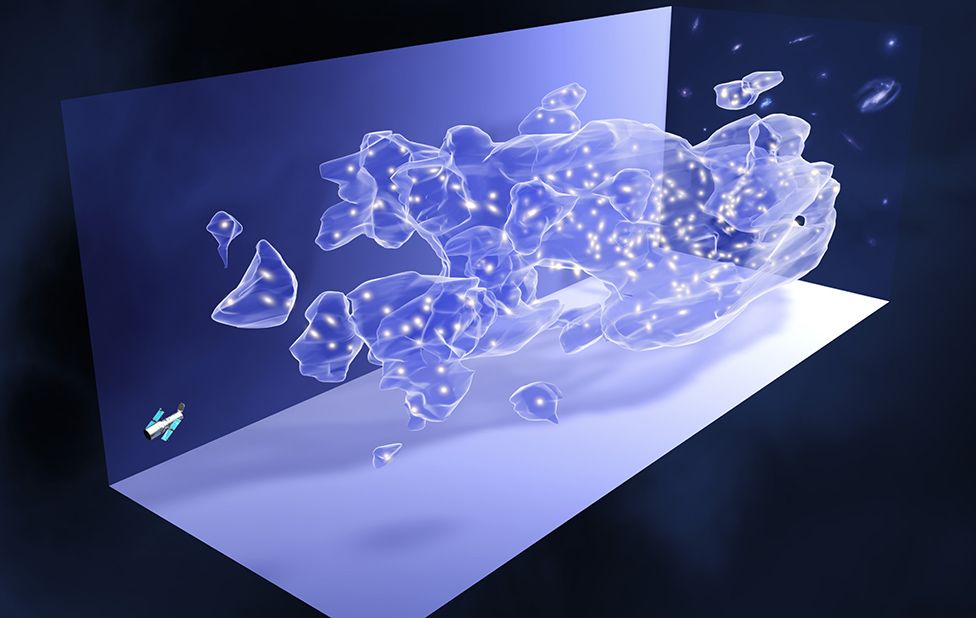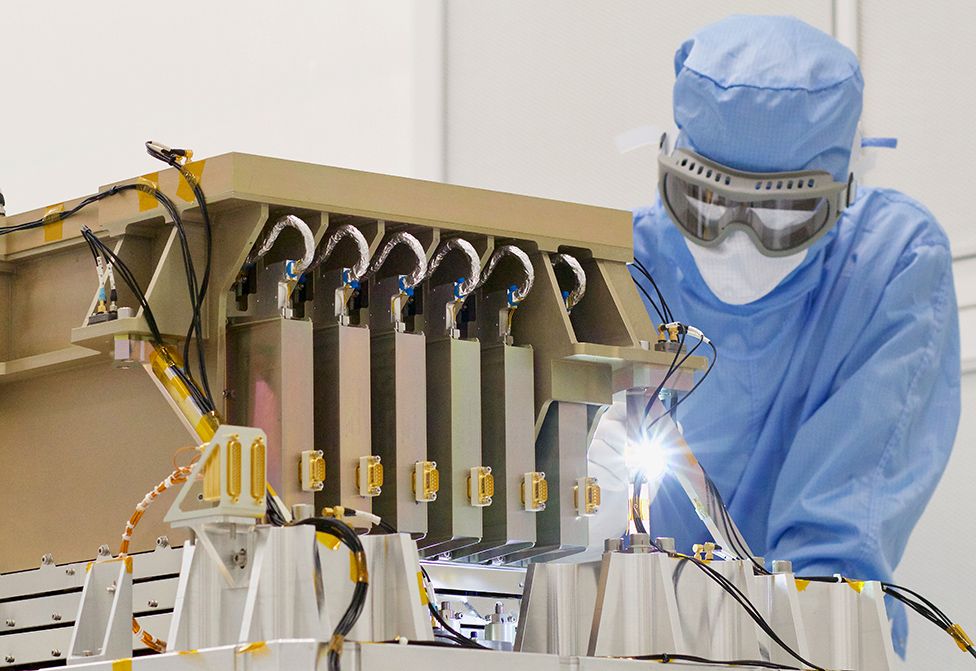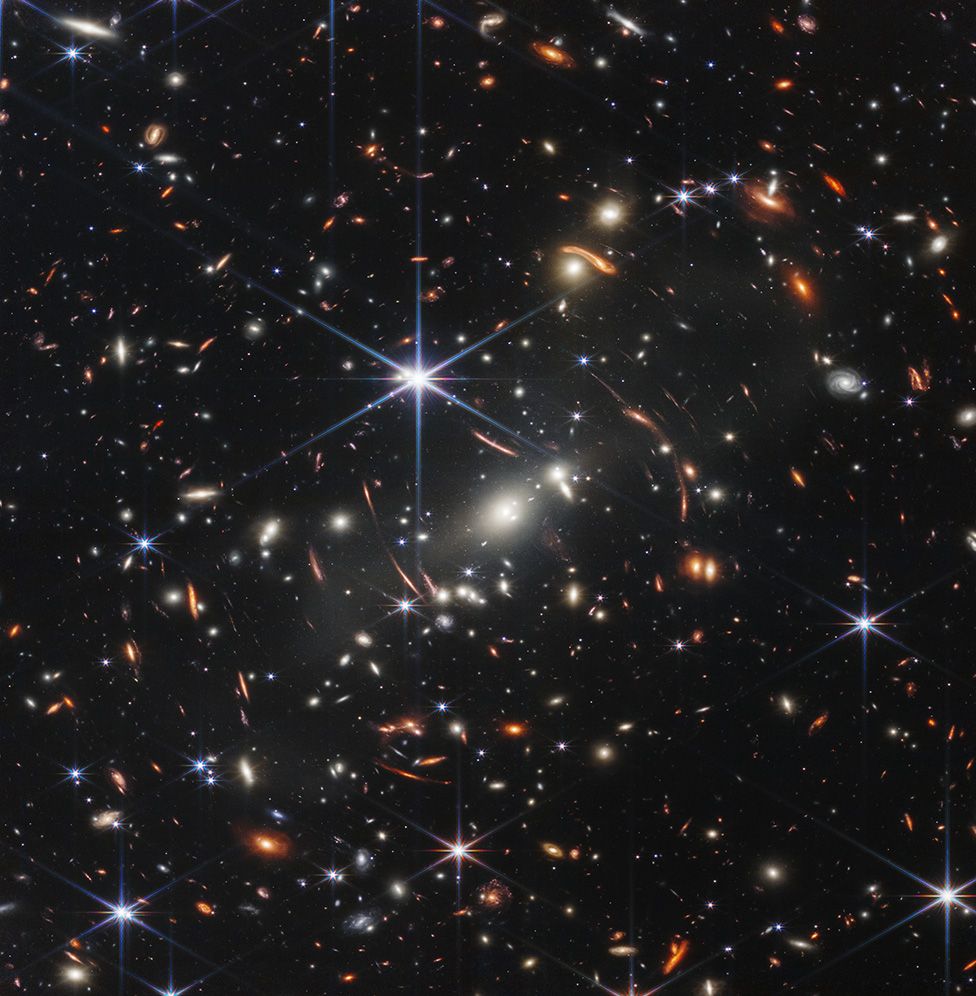What is the Universe made of is one of the most important scientific questions, and it is about to be answered by a European space telescope that will take off from Florida.
In an effort to pinpoint some of the characteristics of so-called dark energy and dark matter, the Euclid mission will create a massive 3D map of the cosmos.
These phenomena appear to work together to shape and expand everything we see in the universe.
Researchers acknowledge that they know very little about them.
Dark matter and dark energy cannot be found directly.
We couldn't really explain our origins because of this significant knowledge gap, according to Prof. Isobel Hook.
Our best chance to start down the road of understanding, according to the astronomer at Lancaster University in the UK, is to use Euclid's insights.
"It will be like embarking on a ship before people were aware of the locations of land in various directions. We'll be drawing a map of the universe to try to understand where we fit in and how we got here, as well as how the entire universe evolved from the Big Bang to the stunning galaxies we can see all around us, the Solar System, and life itself, she told BBC News.
At 11:11 local time (15:11 GMT/16:11 BST), the €1.4bn (£1.2bn) Euclid telescope is prepared to launch from Cape Canaveral aboard a Falcon-9 rocket.
Euclid will be sent to an observation position approximately 1.5 million kilometers from Earth, on the side of the planet opposite the Sun.
Although the mission is primarily a project of the European Space Agency (ESA), NASA also contributed significantly in terms of science and engineering.

Previous research suggests that dark energy makes up roughly 70% of the universe's energy, dark matter about 25%, and all other visible matter, including stars, gas, dust, planets, and us, makes up the remaining 5%.
Euclid will carry out a six-year, two-pronged survey to clarify the nature of the enigmatic 95%.
Mapping the distribution of dark matter, which cannot be directly detected but is known to exist due to its gravitational effects on matter that can be seen, will be a crucial task.
Galaxies, for instance, could not maintain their shape without some additional "scaffolding". Whatever dark matter is, it is assumed that this is it.
The telescope can map the distribution of this material, despite the fact that it cannot be seen directly, by observing the subtle distortions caused by its mass in the light from distant galaxies. This was first accomplished by the Hubble Space Telescope for a famously small patch of sky—just two square degrees.
Over 15,000 square degrees of sky, or just over a third of the heavens, Euclid will do it.

The telescope's VIS, or visible, camera, whose development was spearheaded by the UK, will be at the center of everything.
The Mullard Space Science Laboratory at UCL's Prof. Mark Cropper predicted that the images it would produce would be enormous. "To actually display just one image, more than 300 high-definition TVs would be required. ".
Dark matter and dark energy are two entirely different ideas.
The expansion of the Universe appears to be accelerated by this enigmatic "force.". Three scientists received a Nobel Prize in 1998 for the recognition of its existence and impact.
Euclid will map the three-dimensional distribution of galaxies to learn more about the phenomenon.
It is possible to use the patterns in the vast spaces that separate these objects as a sort of "yardstick" to gauge their expansion over time.
Again, this was done for small areas of the sky by ground-based surveys; Euclid, however, will measure the precise locations of about two billion galaxies up to a distance of about 10 billion light-years from Earth.
"We can then ask some intriguing questions," says Surrey University professor Bob Nichol.
Today we sort of average everything we measure, is the acceleration the same everywhere in the Universe. That would be discovery science, he said, "but what if the acceleration over there isn't the same as over here.

Euclid won't be able to say with certainty, "This is the nature of dark matter and dark energy," but it should be able to condense the range of models and hypotheses that currently permeate thought. It will draw theorists' and experimenters' attention to a particular area.
For instance, it might offer some novel ideas about how to find the particles that are currently believed to account for the majority of dark matter. So far, all searches have turned up nothing.
Euclid may reveal to scientists that a modified theory of gravity provides a better explanation for dark energy than their current best theory, which is that it is not some intrinsic property of space's vacuum. This would also fall under discovery science.
According to Prof. Mark McCaughrean, Esa's senior advisor for science and exploration, "one possibility is that dark energy is actually a fifth force, a new force in the Universe that operates only on enormous scales, so it doesn't influence life here on Earth.".
The fate of our universe could, of course, be greatly influenced by how far it will expand, whether it will continue to accelerate indefinitely and continue to grow, or whether it will eventually contract back down. ".









